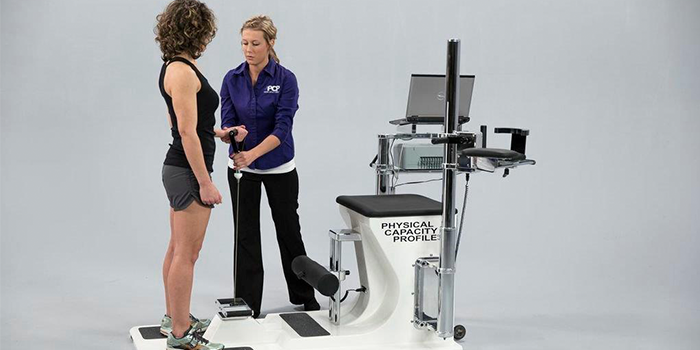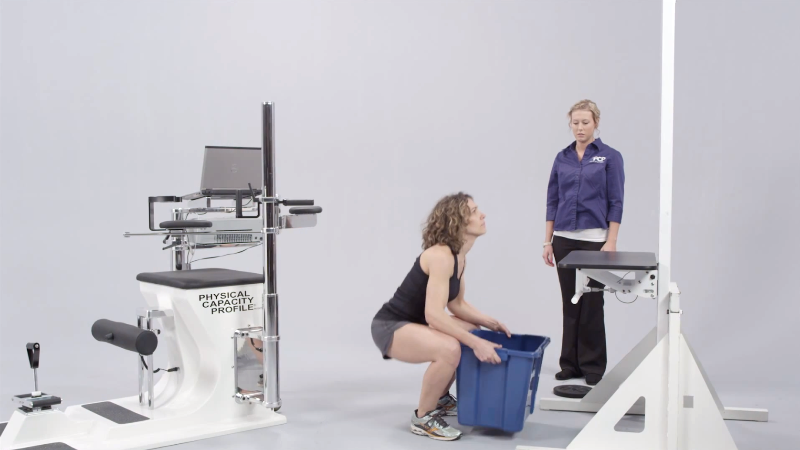Dynamic and Isometric vs. Job Simulation Post-offer or Pre-placement Testing
- By PCP Staff
- •
- 28 May, 2015
- •

It is generally accepted that physical testing of prospective employees has merit in preventing injuries in physically demanding jobs. However, not all testing methods produce equally effective results. This article compares two common testing protocols; dynamic and isometric strength testing and job simulation testing.
Job simulation testing aims to validate or invalidate a candidate’s physical suitability for a job through tests designed to mimic working conditions. For example, a candidate may be asked to lift a specified weight to a specified height a specified number of times. These tests do not quantitatively measure lifting strength or any other anthropometric attribute of an individual, but rather they provide a binary “pass” or “fail” determination for a particular job.
In contrast, dynamic (limb or muscle exerting force while in motion) and isometric (limb or muscle exerting force while stationary) strength testing yields a quantified strength capacity that may be applied to a wide array of jobs and be correlated to strength categories defined by the U.S Department of Labor. This method of strength test is most often done bilaterally for comparative purposes and is coupled with other anthropometric assessments like joint range of motion to produce a complete Physical Capacity Profile® (PCP) for an individual.
Some limitations of job simulation testing are apparent merely from the descriptions of these testing protocols. Because the data only reflects a pass/fail for a particular simulation, the test results can be only narrowly applied to the job or jobs that were simulated. Retesting is often required for job or job requirement changes. Likewise, the test design is frequently subjective, without established standards, which can lead to dispute and legal entanglements in the event of employee injury. In fact, the U.S. Equal Employment Opportunity Commission (EEOC) successfully prosecuted a discrimination lawsuit against Dial Corporation’s use of job simulation strength testing, awarding $3.39 million to the plaintiffs (#3-02-CV-10109).
Job simulation data also lacks substantive quantification to serve as a comparative baseline with any future assessments such as fitness-to-return-to-work testing or workers compensation claim dispositioning after an injury.
Physical capacity profiling with dynamic/isometric strength tests has none of these drawbacks. The testing produces a continuum of data suitable for establishing a comparable physical baseline not only for strength in various areas of the body, but also for range of motion or any preexisting physical impairments. Uncovering and quantifying existing impairments is a specific feature of the PCP testing approach that adds tremendous value to the results. If a prospective employee has limited range of motion in the back, for example, the employer will not be erroneously liable for that preexisting level of impairment should that employee later sustain a work related injury to the back.
Moreover, PCP testing follows AMA guidelines and correlates to strength standards catalogued by the U.S. Department of Labor. This test method has been audited several times by the EEOC with no adverse findings validating that the elimination of subjectivity in the test design and results interpretation makes PCP testing a far better risk management tool for employers. Plus, the richness of data makes the test results “portable” from one job to another as long as the data shows adequate capacity for the job requirements – reducing test/retest requirements over time.
The most impactful differences between job simulation testing and dynamic/isometric testing come when they are applied in real corporations in actual working scenarios. While job simulation has been shown to make 3x reductions in injury rates when used to match employees to their job requirements[1], PCP testing incorporating quantitative dynamic/isometric strength assessment has been shown to make up to 10-100x reductions in injury rates[2]. Such an effective injury prevention mechanism produces real cost savings in the form of reduced workers compensation claim payouts (both frequency and amount), reduction in lost work days, protection against experience rate modifications for insurance premiums, reduced legal expenses and more.
In summary, physical testing improves the work environment for both the employer and the employee, and dynamic/isometric strength testing, coupled with other anthropometric measurements such as those in a Physical Capacity Profile®, is a more effective test method than job simulation testing for protecting employees from injury and reducing costs for employers.
To learn more about bringing Physical Capacity Profile® testing into your organization or becoming a PCP testing center, please contact Occupational Performance Corp. at 785-825-4444 or http://www.pcpworks.com.









